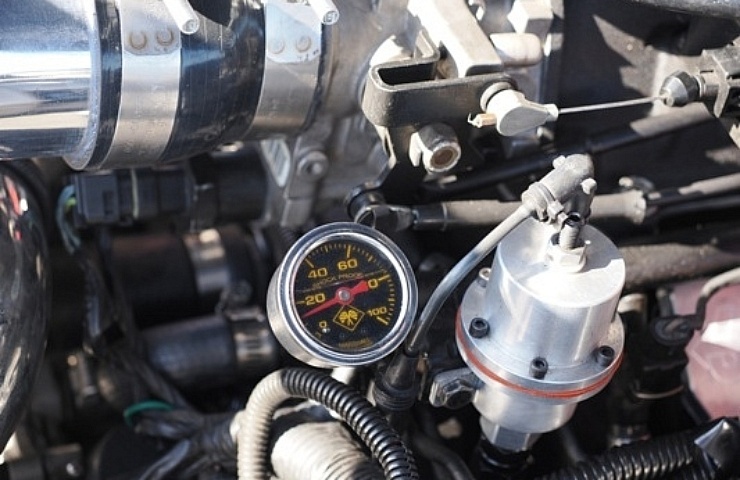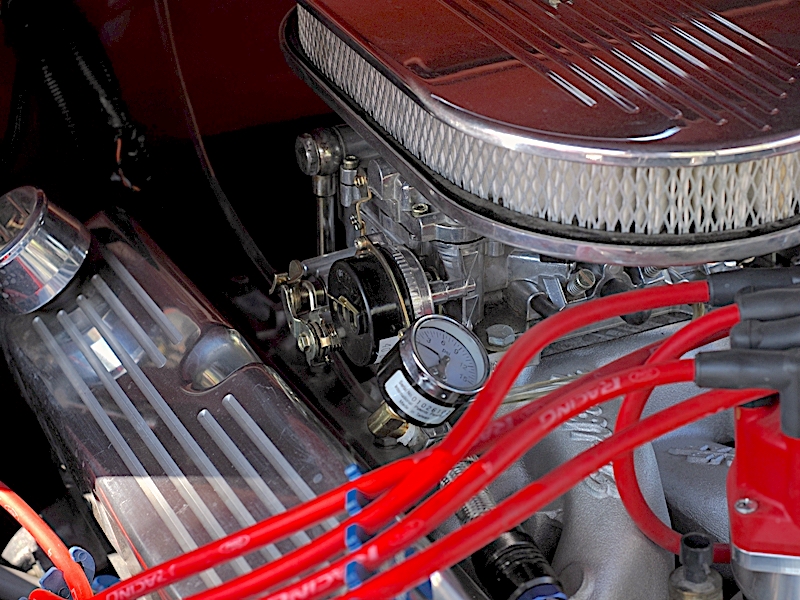One of the most common but least understood gauges measures fuel pressure. If your car has a carburetor, you should get familiar with the fuel pressure gauge. Here’s what you need to know.
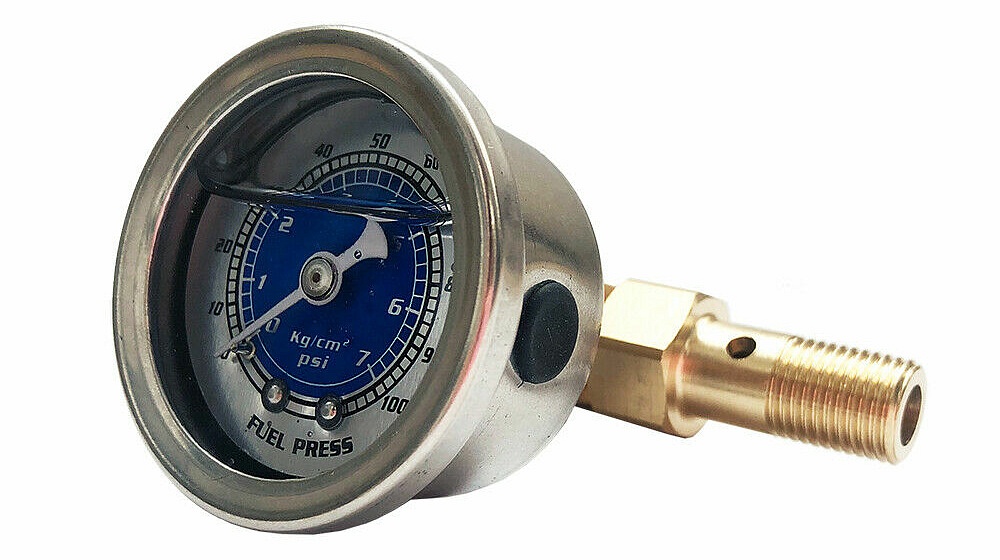
A fuel gauge can usually be easily fitted along the fuel line.
Under Pressure
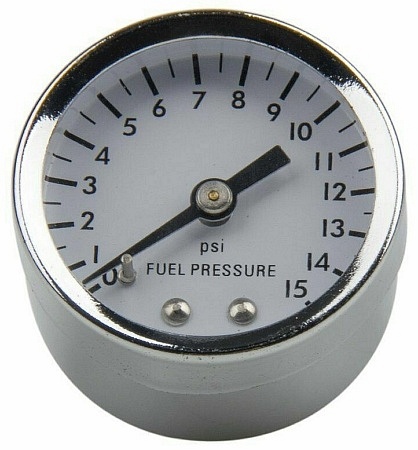
This gauge is intended for carbureted engines, since the reading is only 0 to 15 psi.
The fuel pressure gauge measures the pressure of the gasoline delivered to the engine. It’s usually reported as pounds per square inch (psi).
- The gauge typically reads from zero to 15 psi.
- For engines with fuel injection requiring higher pressures, the indicator will read between zero and 100 psi.
A fuel pressure gauge lets you see if the pressure is sufficient to deliver the right amount of fuel to your engine. If the fuel pressure is too low, your engine won’t run efficiently.
If you need only a quick check, there are simple temporary gauges that you can install. However, most drivers should have access to an ongoing pressure reading.
Shop now for fuel pressure gaugesTypes of Fuel Pressure Gauges
Mechanical Gauge
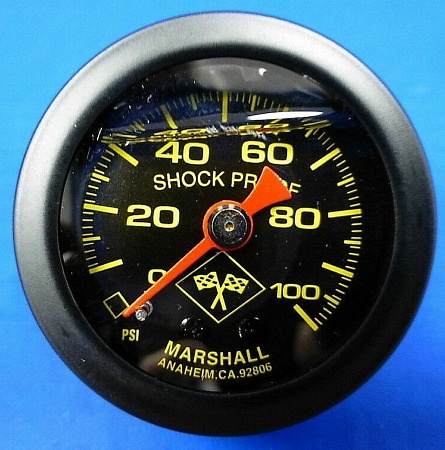
The oil in this gauge, intended for fuel-injected engines, is easily seen.
A mechanical gauge is plumbed into the fuel line, often directly before the carburetor. It uses a valve to detect the pressure of the gasoline as it is pumped into the engine. There are two varieties of mechanical gauges:
- A wet gauge uses a dial filled with clear oil, such as glycerin. This design dampens the effects of the needle’s movements, preventing damage to the delicate parts. However, as the engine bay warms up, the oil in the gauge changes temperature, which could affect the reading. Therefore, some manufacturers provide a relief valve that equalizes the pressure within the indicator (with a press of a pin) for ambient temperature.
- A dry gauge lacks this fluid. Therefore, the dry gauge may be more accurate, but will typically not last as long because engine vibrations cause wear.
Electronic Gauge
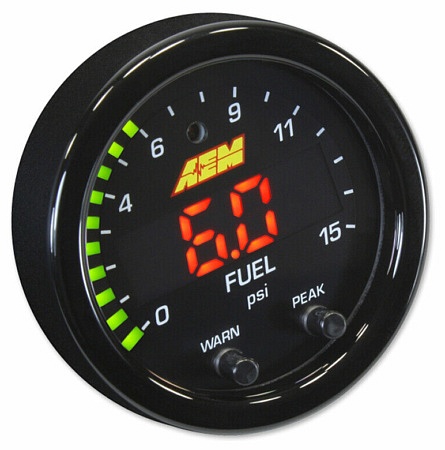
This electronic gauge has a digital readout for quick readings even while driving.
An electronic gauge uses a sensor in the fuel line to measure pressure. The measurement is displayed as a number or via a needle. The advantage is a more precise reading. In addition, electronic gauges have fewer moving parts, making them more durable.
Where Should the Fuel Pressure Gauge Go?
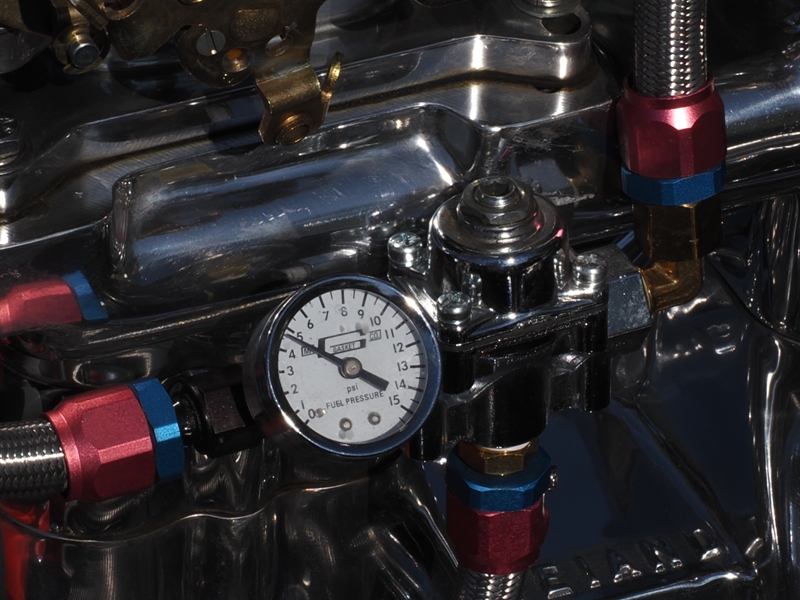
A fuel pressure gauge is normally installed near a fuel line in the engine bay.
Since a mechanical gauge is plumbed along the fuel line, it is usually located near the carburetor. This makes it difficult to see while you’re driving. If you want to know the fuel pressure while you’re on the road, you could put it near the cowl, depending on your hood design.
Plumbing a mechanical gauge all the way into the passenger compartment is a bad idea. It’s not safe to have a fuel line inside your car. However, you can buy an “isolator” that safely transmits the fuel pressure reading. But this is one more component that can fail, so we don’t recommend this option.
With an electronic gauge, since the signal is sent via wires, you can place it anywhere—even on the dashboard.
How to Use the Fuel Pressure Info
Now that you have the gauge installed, what do you do next?
Start up the engine and check the reading. Watch it over time to see if it fluctuates. If it’s steady, confirm that the reading is within the specs for your fueling system. Most carburetors recommend fuel pressure between 5 to 8 psi, but this may vary. Fuel injection systems often require much more pressure, potentially up to 100 psi.
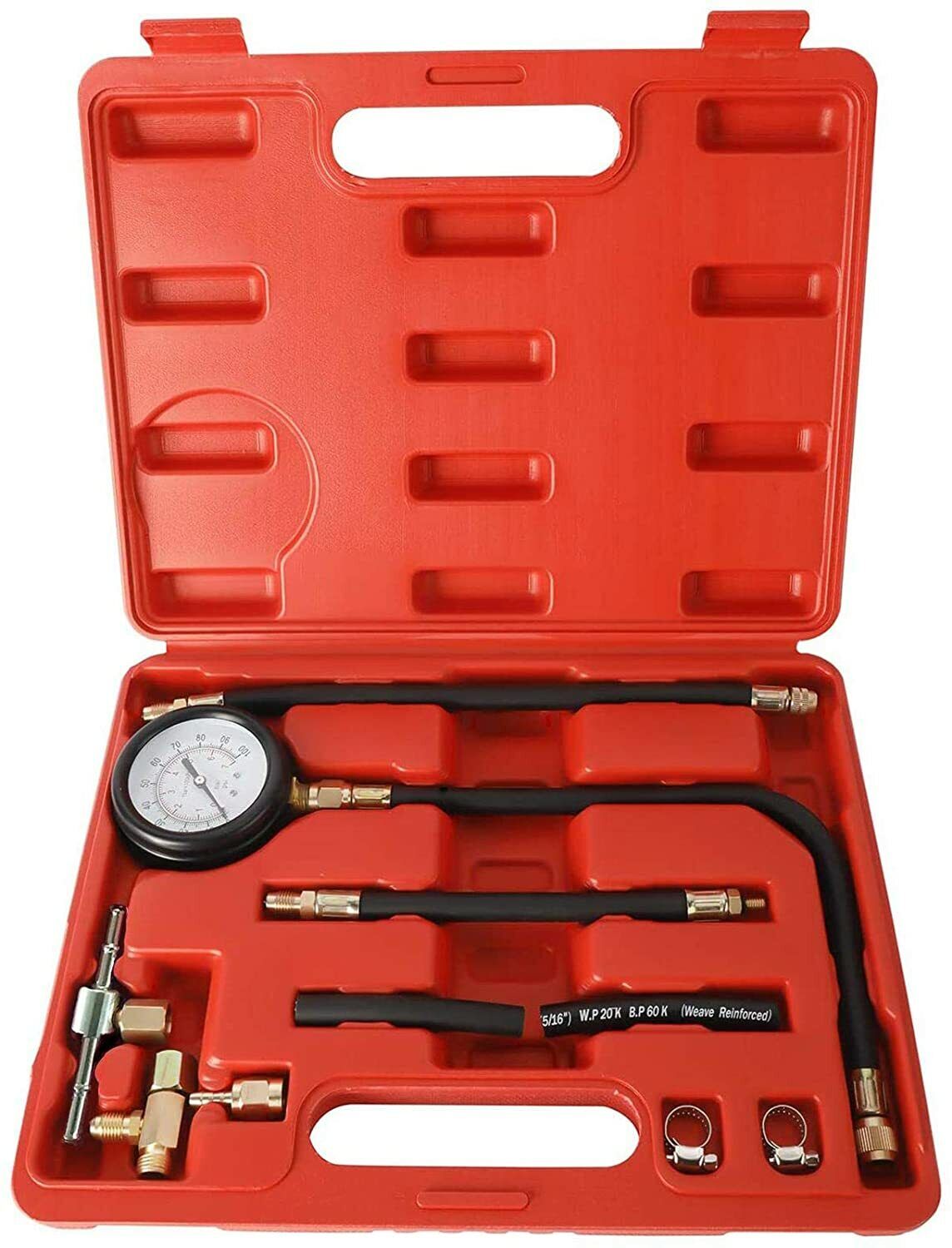
A fuel pressure tester can be used temporarily to check your fuel pressure.
If your engine seems erratic, check the fuel pressure gauge. If the pressure is low, look for a clogged fuel filter or a collapsed fuel line. Before replacing components, use a second gauge to verify a low-pressure reading.
If your pressure remains low, it’s likely time to look at your fuel pump and confirm that it’s flowing at the rated pressure. That’s typically listed in gallons per hour (gph) or liters per hour (lph). If the pump isn’t moving enough fuel, replace it.
Gasoline engines obviously need fuel, spark, and air to run. And those need to be in the correct ratios. Fuel pressure is a critical component in that equation. A properly selected and installed fuel pressure gauge will allow you to troubleshoot problems.
Shop now for fuel pressure gauges
